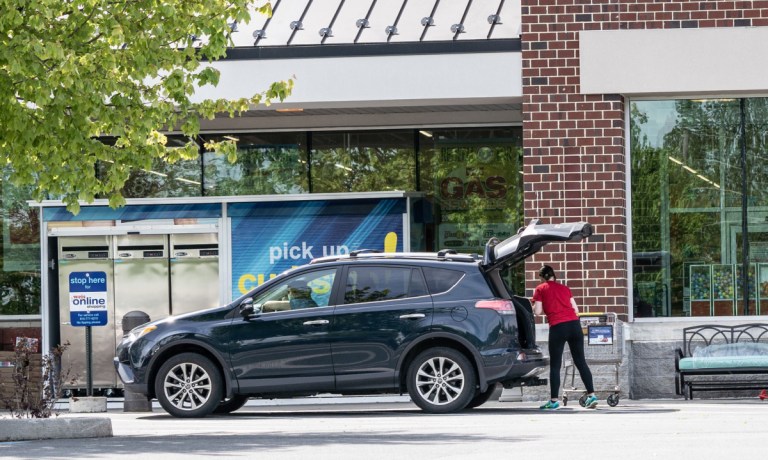
As consumers step up their engagement with online grocery channels, they have a lot of different options to choose from, ranging from third-party marketplaces to brick-and-mortar grocers’ direct digital channels to digitally native eGrocers.
Among all these options, PYMNTS research suggests, grocers’ curbside delivery businesses are poised to see the greatest gains.
Right now, online channels make up only a small share of the total grocery market, but that share is likely to grow significantly in the next year alone, according to data from PYMNTS’ recent study “Tracking the Digital Payments Takeover: Catching the Coming eCommerce Wave,” created in collaboration with Amazon Web Services (AWS), which draws from a survey of a census-balanced panel of nearly 2,700 U.S. consumers.
The study reveals that just 12% of grocery transactions are made via digital channels (half of those via computer and half via phone). However, we could be looking at some very different figures just one year from now: 32% of shoppers said they are very or extremely likely to increase their online grocery purchases in the next 12 months.
Yet whether or not grocers are able to take full advantage of this digital growth comes down to their ability to provide compelling, simple, convenient experiences on their direct digital channels. Otherwise, they must rely on third parties, which own the transaction and take a commission that eats into grocers’ already narrow margins.
“In online grocery today, the biggest shift is from independent retailers relying on others in a way that is not sustainable and not profitable to independent retailers, taking the reins and taking control and investing in this channel, because of all the value that it can create,” Jeff Anders, co-founder and CEO of eGrocery technology company Grocerist, told PYMNTS in an interview.
Good news for grocers — PYMNTS research reveals that a plurality of online grocery customers prefer not delivery (which is where aggregators such as Instacart really shine) but curbside pickup. Findings from the study “The ConnectedEconomy™ Monthly Report: The Gender Divide Edition,” for which we surveyed more than 2,600 U.S. consumers last fall, revealed that 45% of men and 36% of women buy groceries online for curbside pickup, a greater share than said the same of any other digital grocery channel.
In contrast, 43% and 35%, respectively, reported ordering direct delivery (be it from a brick-and-mortar grocer’s digital platforms or from a digitally native brand), and a moderately lower 42% and 28%, respectively, reported using an aggregator such as Instagram.
There are some eCommerce-only curbside grocers emerging to take advantage of this digital demand without sinking the cost into running consumer-facing brick-and-mortar stores. In an interview with PYMNTS, Alex Ruhter, co-founder and CEO of curbside grocer JackBe, contended that the model’s strongest advantage is its ability to offer last-minute convenience.
“We’re having to retrain people in one particular area, and it’s really the game changer for why JackBe has connected in the minds of the consumer, and it’s the fact that you do not have to schedule ahead in order to get groceries,” Ruhter said. “Any [other eGrocery channel] involves scheduling at some point in the future. With JackBe, you can place an order and then go pick up those items immediately.”
Right now, however, these curbside-only players only make up a handful of locations. As such, in the next year, the grocers really positioned to take advantage of rising eCommerce engagement are brick-and-mortar brands. From Kroger getting ready to integrate Albertsons’ digital infrastructure into its eCommerce business to Target redesigning stores to meet curbside demand to Walmart rolling out curbside in new cities, grocers are ready to seize on this rising digital demand.